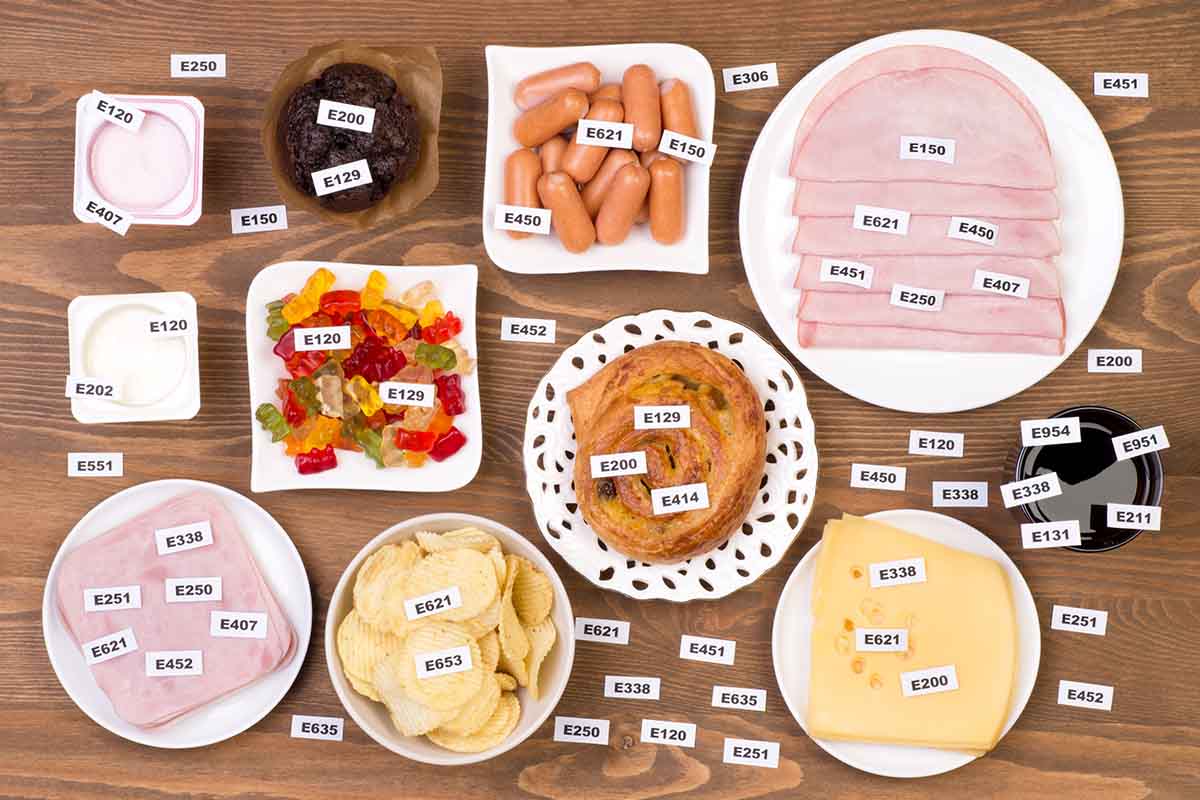Many commonly used foods, as well as some beverages, contain food additives of various kinds: dyes, preservatives, stabilizers, etc., substances that are not always harmless to health, especially if ingested every day, combined with others and for long periods. To clarify this very complex topic, we asked “our” nutritionist for help.
Food additives are talked about more and more often and in some cases there are revisions and second thoughts regarding their use on these substances, which are added to industrial foods and beverages. This is the case, for example, of titanium dioxide, which is no longer considered safe by EFSA and for this reason it was decided to ban it at European level. Read also: Titanium dioxide (E171): banned in the EU as a food additive from 2022 (but will still remain in medicines)
We asked the nutritionist Flavio Pettirossi if food additives can be really dangerous (and in what quantity) but also some advice to limit them. Here’s what he told us:
The possible toxicity of food additives, especially those of chemical synthesis, is one of the most discussed and controversial topics in the medical and food fields. To one of the questions that everyone asks, or whether or not these substances can harm health, it is not easy to answer because many additives are simply substances normally present in nature such as vitamin C or ascorbic acid which is reported by the wording E300 or E440 which indicates pectins that is dietary fibers present in fruit.
However, there are regulations on these substances.
In some cases it has been necessary for the European Union to establish an “Acceptable Daily Dose”, ie the quantity that can be taken every day, throughout life, without causing any harm. This is because, in most cases, quantity is the determining factor. Another multiplier of the danger of these substances is represented by thecombined effect and frominteraction with some foods. A striking example are nitrosamines, carcinogenic substances formed by the combination of nitrates and amines already present in food. Precisely for this reason one was reserved more attention to nitrates (E249, E250, E251, E252), as they can undergo chemical transformations such as to lead to the formation of potentially toxic and carcinogenic substances. Furthermore, some additives can be responsible for the manifestation of symptoms typical of food intolerances.
How can we protect ourselves?
Given the wide diffusion of these substances we say that we cannot completely avoid them because it would be impossible but we can limit their intake since most of these are used in the production of sweets, cookies, candies and so on. So we could try to opt for an occasional consumption or prepare our favorite foods directly at home (sweets, biscuits, etc.), in this way we will minimize the amount of additives. More generally, we try to use packaged foods as little as possible, because in most cases it is not really possible to understand what they contain. Let’s always use fresh, seasonal and preferably locally sourced products, it will take a little more effort, but it will certainly gain our health.
So let’s follow these good tips: buy fresh and seasonal food, limit industrial products to a minimum and go back to preparing food at home as much as possible. Consider that, at least according to a study recently conducted in France, by consuming industrial foods we risk on average ingesting 11.3 grams of additives for a total of over 4 kg per year! Read also: Food additives: a person weighing about 70 kg takes on average over 11 grams per day
Follow us on Telegram | Instagram | Facebook | TikTok | Youtube
Read also:
.
